• Army co-operation • Ambulance/search and rescue • Trainer
Conceived at the end of World War II, the Sycamore was designed by Raoul Hafner and was the first British helicopter to gain a civil certificate of airworthiness. It was used for search-and – rescuo duties and as an air ambulance by tho Royal Air Force, and was also tested by the British Army. The Sycamore was even used by the Federal German army and navy, and British examples saw combat service in Borneo, Cyprus and Malaya.
Bristol Sycamore
 Picking up survivors ►
Picking up survivors ►
Sycamores pioneered helicopter soarch-and-rescue flights around tho United Kingdom. Most units used the HR. Mk 14 version in this role.
A Evaluation flight
The first Sycamore for Fighter Command. WV781, was flown to St Mawgan by two RAF pilots who had just been trained by Bristol company crows.
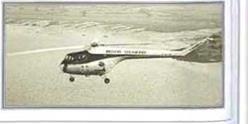 A Australian delivery
A Australian delivery
The aircraft-earner HMAS Vengeance took delivery of the Royal Australian Navy’s first threo Sycamore HC. Mk 51s.
Company colours ►
This Sycamore is flying over tho Severn Estuary not far from tho Bristol factory at Filton. The company gave up helicopter production after tho Belvedere.
FACTS AND
► The rotor blades were constructed of spruce and ply ribs with a plywood covering and a Hydrullgnum spar.
► Originally known as the Type 171, the Sycamore was Bristol’s first helicoptor.
► Tho Sycamore had a simple auto-throttle which the pilot could ovorrido.
FIGURES
>■ Tho last Sycamore version was the HR. Mk 14, which servod with Fighter Command’s No. 275 Squadron.
>• In early Sycamores tho pilot sat to port, but this was later changed to starboard.
► Tho main production version was the Typo 177 Mk 4, which had taller landing gear.
|
|
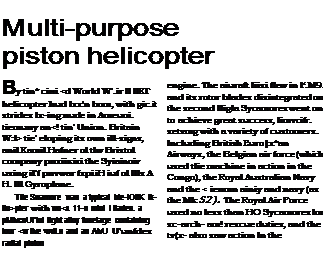 |
|
Sycamore HR. Mk 14
Type: five-seat muiti-rofe piston-engined military hdicODtor
Powerplanl: one 410-kW (550-hp I Alv* Leonides 73 radial peton engine
Maximum speed: knVh (127 rn p. fij
Initial Climb rate: 280 rrvmin (918 f. p.m )
Range: 430 km (265 ml)
Service ceiling: 4724 m (15,500 tt.)
Weights: empty 1877 kg (4.129 lb ), maximum 2452 kg (5,394 ID I
Accommodation: five including pilot Dimensions:
diamotor 14,8 m (48 It. 0 in.)
length 18.63 m (61 tt. 2 In,)
height 3.71 m (12 »L 2 in)
tail rotor diamotor 2,93 m (D It. 7 m.)
|
|
|
Below: Federal Germany bought SO Sycamores. Two served as VIP transports and the others performed a range of military duties.
|
|
|
Above: Unfortunately for the Sycamore, it never survived into the turbmc ora. It it had it boon re-engined with a gas turbine It may have been in service for for longer.
light-assault role in Malaya Hie Sycamore 11C Mk 11 was evaluated as an ait aniUilance and communications aircraft hy llte. Літу Ліг Corps
|
|
|
|
 |
|
The three-btotfc anti – tenme rotor vr. tr, equpped with a Iroe-wheal so « could contirxre timing dLnng auio-rotation
|
|
 |
|
The Бусатот ivnl ieonventcrvil осилил Dwcotoctvn Іе. і« find n мпрс Тлі it <yp’ trifofre. – and an auto route
|
|
|
Medical ovocuaton SyoarTcras hod uvrjo Pctscg* testers Wed to nlbw stretchers to Do occommodetod skMigp пегом ttw cabin
|
|
|
Lfcn many oany hetooptera, the Sycamore nad wooden rotor* wm л metal leading edge Metal tnoo wwo f-ttixt cn eocti root and rotor tip to correct uorodymma: bfltonco Tho bodes worn tufy antcutatcd n tx>th (tapping and dragging planer
|
|
|
SYCAMOREHRMkH 20-1 km* (177 e_f. h.|
|
|
|
170 к in’ll (105 n p. h.)
|
|
|
|
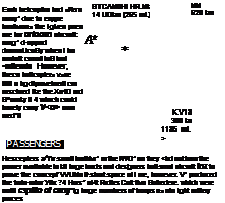 |
|
Л Я06 ♦»naust was trttfKt to moo OCCTCJsng the dock when londng on nhpa. tho mno •eyfcxJer radial engno drew or n through an intake above the (ue«lage, :ind was coceod Ry an engne-dnven fan
|
|
|
Л long tan bumper protected Hw tul rotor, wticfi was зиэоерСЫо to cwm.*ge f ttwi jMut toad m a ncee-high altitude on landrg
|
|
|
B^ng helicopters
^^fCTTVE; The Ц. ІС! takes oil by raising ОощГК’"*. ■>,Ch "* *** ‘"ceasing the
В"Пд Th# throttle.
|
|
 |
|
on th^pOWER: Рад alters the pitch
»W Dt’«. "* Vla con, ro’rwJS to, he ‘’«•O. giving greater hti to tho rotors
|
|
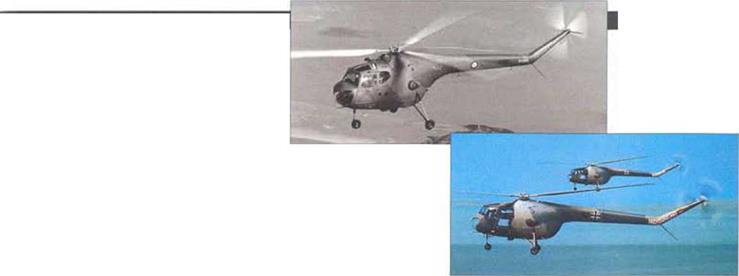


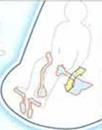


Bristol
• First RAF twin-rotor • Heavy-lifter • Search and rescue
Bristol’s excellent Belvedere gave new muscle to the Royal Air Force in the 1950s at a time when helicopters were becoming bigger and more versatile. With twin engines and tandem rotors, the slender, cigarlike Belvedere lifted and carried more than any previous RAF helicopter. Never successful in its original purpose as a naval craft, the Belvedere performed well hauling troops, supplies and weapons from land bases.
A Malayan mission

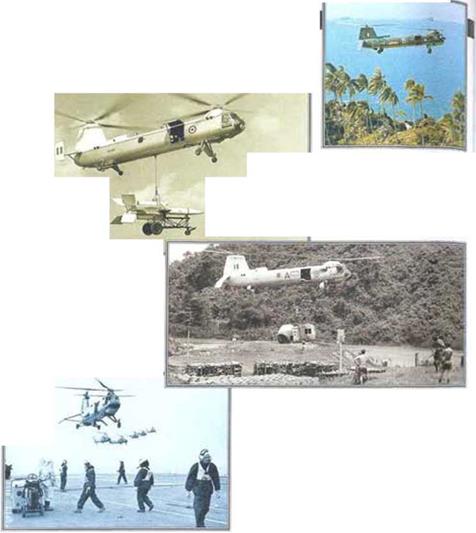 With emergency floats fitted to the side. Belvederes flew search and rescue missions and heavy lift sorties in the junglos of Malaya.
With emergency floats fitted to the side. Belvederes flew search and rescue missions and heavy lift sorties in the junglos of Malaya.
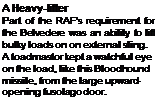
A Flying crane
Due to the lack of roads and the dense tropical /unglo. the Belvedere was used for transporting heavy items in the Far East.
▼ Back to the drawing board
The Type 173 was the initial prototype. On its first flight the tost pilot found it would only fly backwatds
A Naval trials
The Belvedere was initially developed to meet a Fleet Air Arm requirement for a ship-based transport and anti-submanno helicopter, but it was never ordered.
FACTS AND FIGURES
► The first Belvedere suffered noise and stability problems – rectified by rodosigning the rotor hubs and tailplane.
>• On 24 August 1952 the prototypo for the Bolvodcre series made its maiden flight
► The prototype was domonstratod at the Farnborough air show in September 1952.
► British European Airways leased n Bolvodero briefly but never used it in commercial service.
► The first production aircraft with Gazelle engines made Its Initial night in July 1958-
>• The Belvedere had a long career, onding Its RAF servlco in March 1969.
|
|
 |
|
Below: Due to some handling and stability problems the designers settled on anhedral tailplanes originally fitted with largo endplates.
|
|
|
Type: short-range tactical transport
Powerplanl: two 1092-kW u.465-hp | Napier Ga? ello NGa.2 turboshaft engines
Max speed: 231 km/h (145 m. p.h. J Max cruising speed: 222 kmh П38 m p. h) Rale ol climb: 305 mfttw (1.000 f p m)
Range: 121 km (75 m* |
Ferry range: 740 km (460 mi.)
Service ceiling: 5275 m (17.30? ft)
Weights: empty 5277 kg (11.609 lb.); maximum overload take-on 9072 kg (19.958 >o)
Dimensions: rotor diameter each 14 91 m (49 ft,) length rotors tuning 2736 m (90 ft )
heighi 5.26 m (17 ft I
rotor disc area, both 349.30 m’ (3.758 aq ft)
|
|
|
Above: Bnhsh European Airways evaluated the Alvis Leonides – powered Typo 173. The dihedral tailplanes were a feature of the earfy prototypes.
|
|
|
performed with distinction. I hough never easy lo lly and always a challenge lo maintain, die Belvedere dill a Пік* job in die infancy | of large helicopters
|
|
|
Left: Based at RAF Soletar in Singapore, No. 66 Squadron Belvederes became known as ‘The Flying Longhouses’.
|
|
|
|
|
urn Ajji
Vit Ffjwj Cinjtitasrs
|
|
|
|
|
TharM to її» «МлЬггЛ СшгЛл ЬгЬОіМП міднім ОнЛнОмв Ш дхк» portomuxo aid мі n rxyntKK or pont-to-pctol "oocxch m tho e»ty i960» TNi Vah-?4 *u Awn put cood carry Ьдоа» loom
|
|
|
Prototypes used UxrwTes Motor engnes. which del not produce adoquato
(XMrttf vrnn the «XCOVtol
Napier Gazofe turboshalte люто fitted tho BoMtoero began to fulti its potento
|
|
|
This Belvedere of No. 26 Squadron wears Ihe original
transport command colour scheme. The squadron’s
Bclvedorer. saw active service in tho Far East whoro
they adopted jungle camouflage.
|
|
|
|
|
|
|
A iwnch on toe port s*» cX the fuselage ccxAl «ft weights
ql up to 270 kg {600 to.).
|
|
|
|
|
cany? o My. rnned troop» it* BoViHXre cook) Mo cany up to t? »trotcn«r сам» together w<th nadicei attendant*. The large» Yak-?4 could cany •jp U> 30 troops, which wa* a very impress»»* acrutvement I» the Uto‘ 1950s The И 2І could «so cany stretchers for CAtuaOy *.acu*tx»i duiu»
|
|
|
|
|
The heat.») coont. v «Мй»з cr day •И right natnj*-nvii V*j И had dual СОгл’а“- aixj proviso *iaulom. it.; plot
|
|
|
The product on Befveoere tor the RAF had stoop, .mhorfrDi taitpiarsM when picwdod good stnbnly and extra lift.
|
|
|
Although tarty trai m appearance me ипоегсагтыде was an oxoetont design ofcnung operation *rom rough surfaced – The ensioong «rant wfioctn ai. o good manoointabMy on toe ground
|
|
|
|
|
Uftng cjpat. lr* wa a prrnary con»de»aDCn m the огмцп ana «I three hthcoolw» crxAJ cany e им»» рв»*ма They ано had pto»1«on tor carrying unotnxxx) load»
|
|
|
|
|
LANDING SITE: With the suppfias earned on a sling the Belvedere did not need to land to supply troops on the ground. A small clearing In the single e all that was needed
|
|
|
|
|
|
 |
|
^ lOW LEVEL: Thu RAF crows pnjqfcxffijVng
thcr supply nvssions at very tow level to
proven! detection by enemy fighters or ground forces. Th«s task required groat care and skill.
|
|
|
|
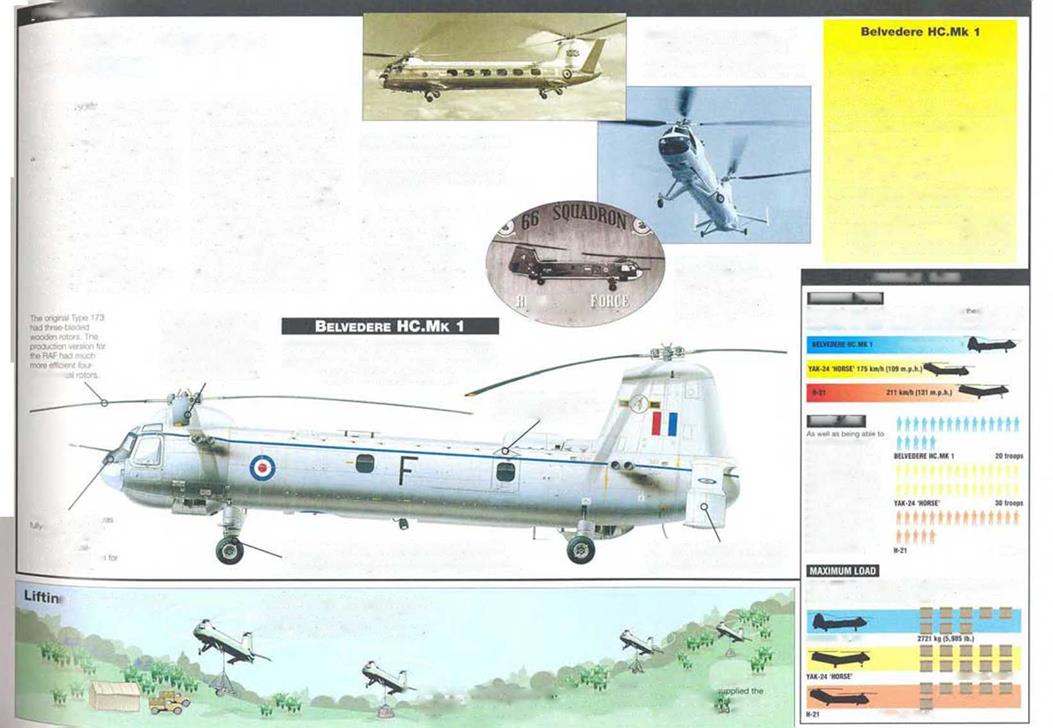
ClERVA

 Heli-liner ►
Heli-liner ►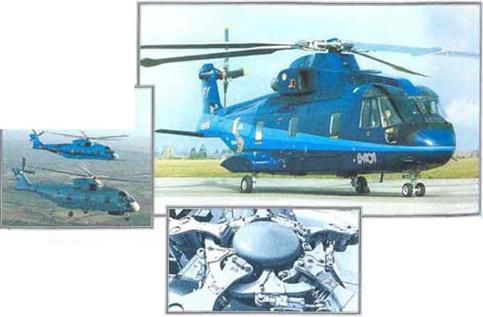 A Leaning fin
A Leaning fin ATrials family
ATrials family
![]()
![]()
![]()
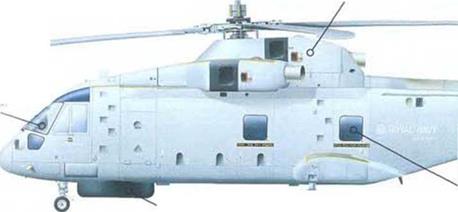 The EH Ю1 has a •We-oMhi ext gloss coct-p/t wni •rub fund rtspiayr.
The EH Ю1 has a •We-oMhi ext gloss coct-p/t wni •rub fund rtspiayr.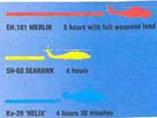





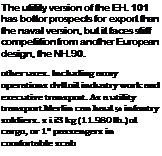

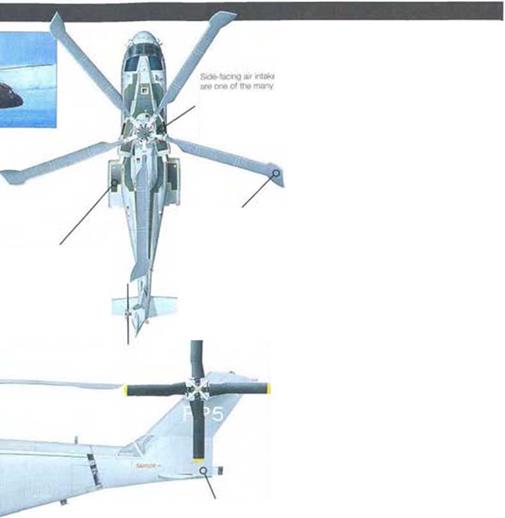
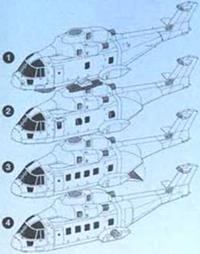











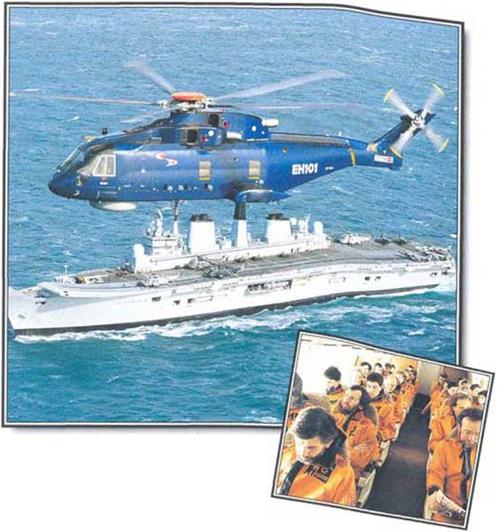
 he EH.101 Merlin is the West’s most promising large naval anti-submarine and rescue
he EH.101 Merlin is the West’s most promising large naval anti-submarine and rescue  To start the meet rotor spmng Mfcm taMr-of. Pw C tft and Шаг <*sgrw nhoducort а <*mi ігапатьюп *yscm imm vw men engnc. T»« лаг. controM by a rotor склф ana brake operator front rno cocxjut
To start the meet rotor spmng Mfcm taMr-of. Pw C tft and Шаг <*sgrw nhoducort а <*mi ігапатьюп *yscm imm vw men engnc. T»« лаг. controM by a rotor склф ana brake operator front rno cocxjut Although tne mtutl Cwrva dosagrm used rsretng mroran hifiwaix». ttw C. 19 wxt subooauu* modes avto смгрове-txrtt Sixty s« wero icence-butfi by л v Btx* and Co. Ltd. at ut Manchester in France. LtorO et Омег bud 25 dowynuled LeO СЭ0′. w*ste Госко vMif їли! ao cui’ipiti
Although tne mtutl Cwrva dosagrm used rsretng mroran hifiwaix». ttw C. 19 wxt subooauu* modes avto смгрове-txrtt Sixty s« wero icence-butfi by л v Btx* and Co. Ltd. at ut Manchester in France. LtorO et Омег bud 25 dowynuled LeO СЭ0′. w*ste Госко vMif їли! ao cui’ipiti
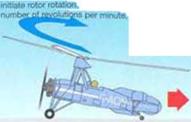


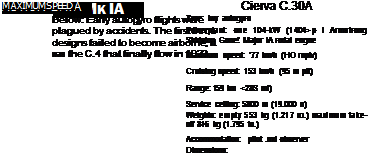
 Kota Mx It (С 30A»> had a too xpeed oomporaUe to me n«od wrgfeMWSx»" AIMugh fW Rot» wem oflacncO to tn* School of Army Cocpeahcn trey *«• soon aswjnod a coastal radar catbraeon role The Storch was a «MukO Oerman StOt taaon arcraft
Kota Mx It (С 30A»> had a too xpeed oomporaUe to me n«od wrgfeMWSx»" AIMugh fW Rot» wem oflacncO to tn* School of Army Cocpeahcn trey *«• soon aswjnod a coastal radar catbraeon role The Storch was a «MukO Oerman StOt taaon arcraft




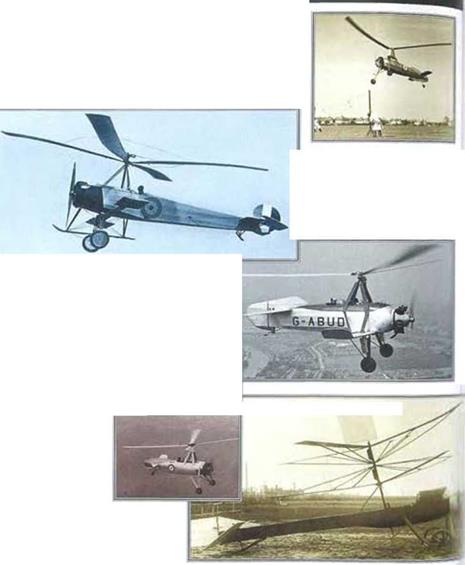
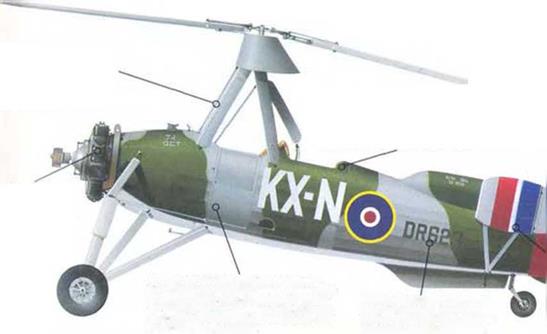
 Picking up survivors ►
Picking up survivors ►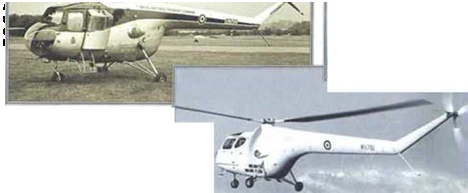
 A Australian delivery
A Australian delivery







 With emergency floats fitted to the side. Belvederes flew search and rescue missions and heavy lift sorties in the junglos of Malaya.
With emergency floats fitted to the side. Belvederes flew search and rescue missions and heavy lift sorties in the junglos of Malaya.


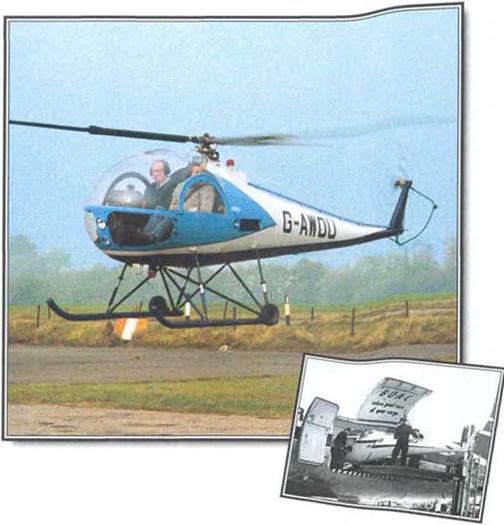 n 1946 the first of Brantly’s helicopter
n 1946 the first of Brantly’s helicopter designs, the over-complex B-1, flew for the first time. Undaunted by the unpopularity of his initial design, Brantly went on to produce the best-selling B-2. Through at least three changes of company ownership, the B-2 remained in constant production, a testimony to the soundness of the basic design. Constant improvements allowed the type to remain in production from 1958 until 1994.
designs, the over-complex B-1, flew for the first time. Undaunted by the unpopularity of his initial design, Brantly went on to produce the best-selling B-2. Through at least three changes of company ownership, the B-2 remained in constant production, a testimony to the soundness of the basic design. Constant improvements allowed the type to remain in production from 1958 until 1994.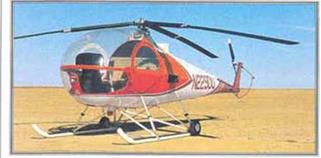

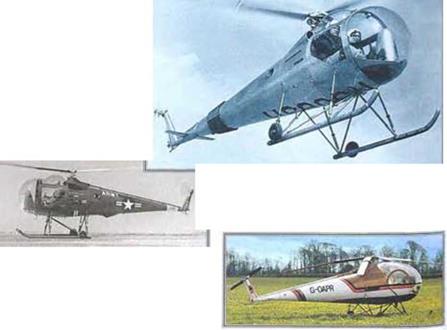








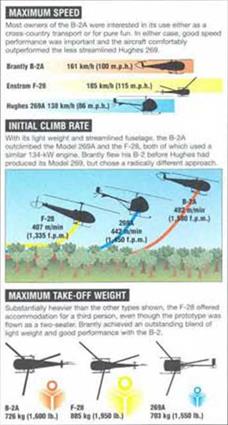

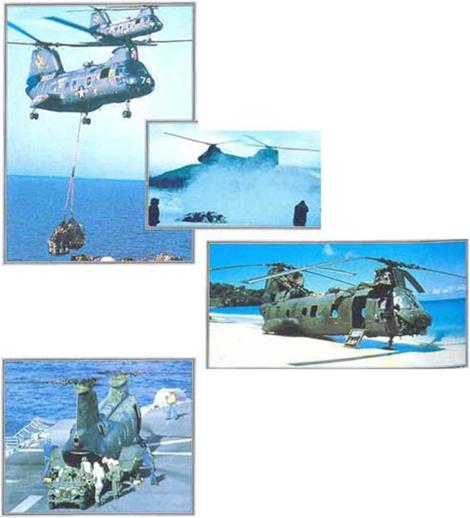 ◄ Resupply at sea
◄ Resupply at sea



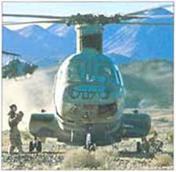
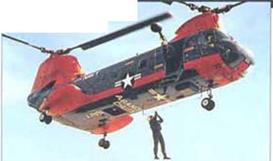
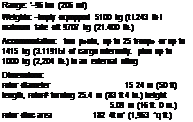

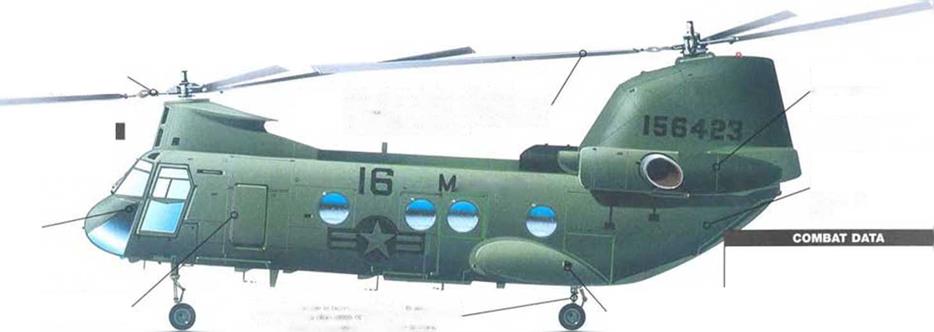





 With Its familiar tandem-rotor
With Its familiar tandem-rotor
 With the Boeing MH-47E. the US
With the Boeing MH-47E. the US
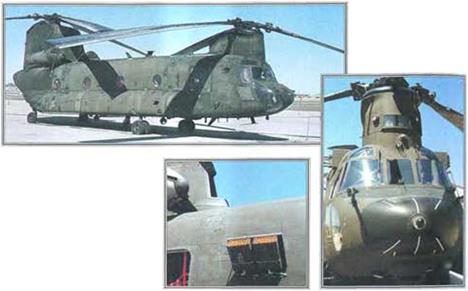 Smaller saddle tanks identity this as an early MH-47D operating with an Oklahoma unit of the Amiy National Guard.
Smaller saddle tanks identity this as an early MH-47D operating with an Oklahoma unit of the Amiy National Guard.
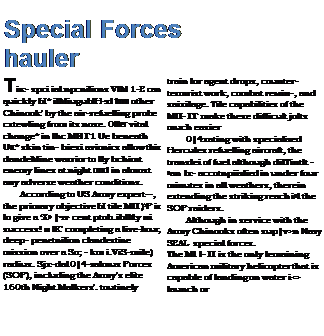

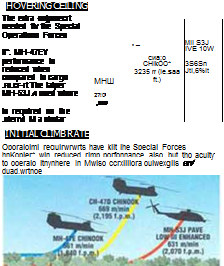



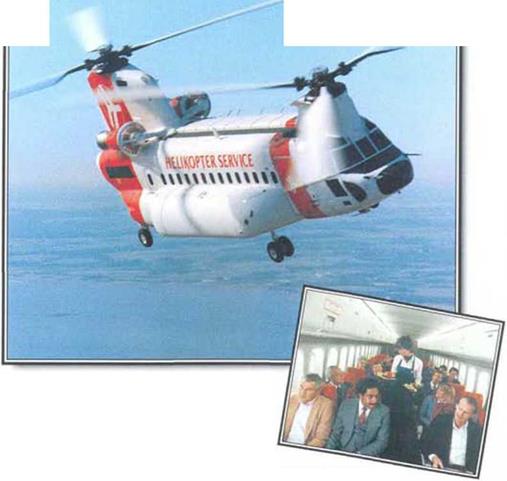 epresenting the muscle among the Western world’s helicopter designs, the Chinook was seen as an ideal aircraft for companies specialising in construction, logging and petroleum exploration. Although the Chinook was designed for military use and is well-known for its US Army duty in Vietnam, this big, durable, rotary-wing craft can handle heavy cargoes and travel respectable distances making it ideal for commercial applications.
epresenting the muscle among the Western world’s helicopter designs, the Chinook was seen as an ideal aircraft for companies specialising in construction, logging and petroleum exploration. Although the Chinook was designed for military use and is well-known for its US Army duty in Vietnam, this big, durable, rotary-wing craft can handle heavy cargoes and travel respectable distances making it ideal for commercial applications.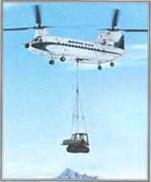 Booing Helicopters marketed the Commercial Chinook as an aircraft combining heavy-lift capabilities (nine tonnes internally or 12.7 tonnes externally) with a useful 44-seat passenger load.
Booing Helicopters marketed the Commercial Chinook as an aircraft combining heavy-lift capabilities (nine tonnes internally or 12.7 tonnes externally) with a useful 44-seat passenger load.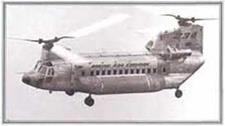 ◄ Prototype
◄ Prototype

 ▼ Cold weather versatility
▼ Cold weather versatility




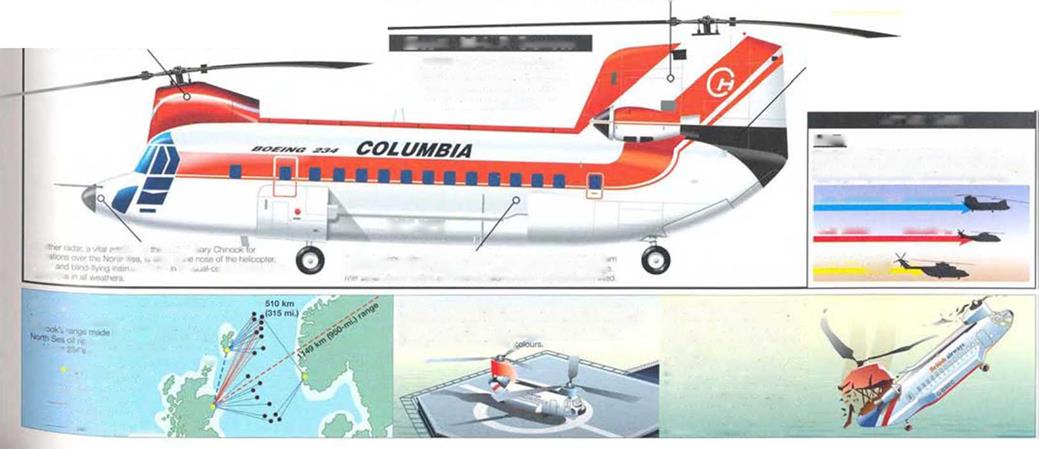

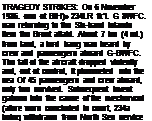 Other helicopter routes
Other helicopter routes